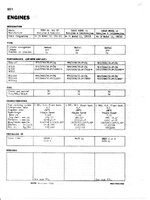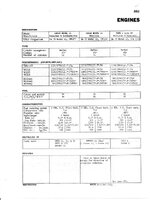Shortround6
Major General
The maneuver vs speed argument has gone in a number of directions including this one.
My thought is that the 1942 A6M2 and Ki-43 had basically 1940 performance and armament. It did not get a lot better as the war went on. Perhaps they closed the gap to one year?
Criteria are in squadron service aircraft, not prototypes or service test.
The early fighters had great range, they sacrificed things to get it (firepower and protection).
Many other Japanese fighters did not have a range outside the range that is "normal" for the fuel capacity/speed for other fighters.
The Japanese were always behind in armament, and let's not go by barrel count but actual fire power.
The Japanese did face several handicaps. One was fuel quality, but you can't just pour in Allied fuel and get allied power levels. You often need better materials (another short coming ) and better cooling, which also may require changes in tooling and/or basic structure.
Another handicap, faced by many of the smaller nations, was the size of the engineering force. Not "Idea men" but the engineering grunts that did the stress calculations and other calculations and the draftsmen to do the drawings. Some fighters had tens of thousands of parts and each part needed at least one drawing and sometimes several. A larger company or company in a larger country can complete a project in less time due to the greater resources that can be used to bring the project to completion. Has nothing to do with talent or skill of the designer (or design team).
For Japanese army fighters
The Ki-43 II entered service in Dec 1942/Jan 1943
The Ki-44 entered "service" in late 1941 but they only built 50 of them until the service Ki-44 II showed up in Dec 1942?
Ki-61 entered service in Dec 1942/Jan 1943?
Ki-84 showed up in actual service (not trial unit) in the summer of 1944.
My thought is that the 1942 A6M2 and Ki-43 had basically 1940 performance and armament. It did not get a lot better as the war went on. Perhaps they closed the gap to one year?
Criteria are in squadron service aircraft, not prototypes or service test.
The early fighters had great range, they sacrificed things to get it (firepower and protection).
Many other Japanese fighters did not have a range outside the range that is "normal" for the fuel capacity/speed for other fighters.
The Japanese were always behind in armament, and let's not go by barrel count but actual fire power.
The Japanese did face several handicaps. One was fuel quality, but you can't just pour in Allied fuel and get allied power levels. You often need better materials (another short coming ) and better cooling, which also may require changes in tooling and/or basic structure.
Another handicap, faced by many of the smaller nations, was the size of the engineering force. Not "Idea men" but the engineering grunts that did the stress calculations and other calculations and the draftsmen to do the drawings. Some fighters had tens of thousands of parts and each part needed at least one drawing and sometimes several. A larger company or company in a larger country can complete a project in less time due to the greater resources that can be used to bring the project to completion. Has nothing to do with talent or skill of the designer (or design team).
For Japanese army fighters
The Ki-43 II entered service in Dec 1942/Jan 1943
The Ki-44 entered "service" in late 1941 but they only built 50 of them until the service Ki-44 II showed up in Dec 1942?
Ki-61 entered service in Dec 1942/Jan 1943?
Ki-84 showed up in actual service (not trial unit) in the summer of 1944.


